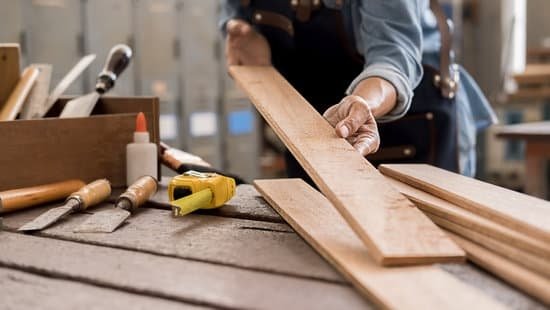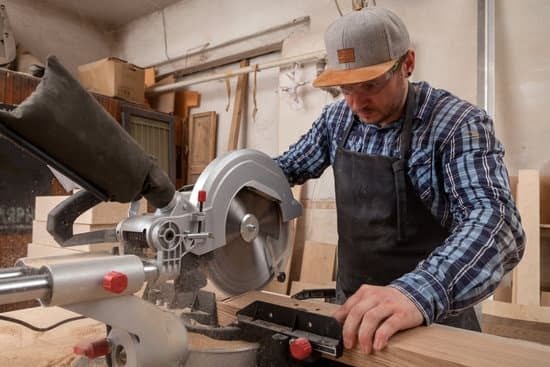Woodworking feet play a crucial role in the construction of furniture, providing both functional support and aesthetic appeal to various pieces. These feet serve as the foundation of furniture, elevating it from the ground and ensuring stability. Whether creating a classic antique piece or a modern design, understanding the importance of woodworking feet is essential for any woodworker looking to achieve professional craftsmanship.
When it comes to woodworking feet, there are various types and styles to consider. From simple tapered feet to intricately carved designs, each style can enhance the overall look of a furniture piece. The choice of woodworking feet can greatly influence the style and character of the finished product, making it essential to carefully select the appropriate design that complements the overall aesthetic.
Crafting woodworking feet involves using a combination of different materials such as wood and metal. Each material offers its own unique characteristics and benefits, allowing woodworkers to achieve different looks and functionalities in their projects. By exploring the variety of materials available for woodworking feet, artisans can create custom-made pieces tailored to their specific needs and preferences.
Types of Woodworking Feet
Woodworking feet play a crucial role in the overall aesthetics and functionality of furniture pieces. When it comes to woodworking feet, there is a wide range of styles and designs to choose from, each adding a unique touch to the final product. One common type of woodworking feet is the cabriole leg, characterized by its graceful curves and ornate details. This style is often associated with traditional and classic furniture designs, adding a sense of elegance to any piece.
Another popular choice for woodworking feet is the tapered leg, known for its sleek and modern appearance. Tapered legs can vary in length and width, offering versatility in design options. By contrast, bun feet are short, turned wooden or metal pieces that provide sturdy support while also adding a touch of charm to furniture items. These types of woodworking feet are often seen on pieces like cabinets, tables, and chairs.
For those looking to create a more rustic or industrial look, metal hairpin legs are a trendy option. These simple yet stylish legs feature thin rods bent into hairpin-like shapes, providing a minimalist aesthetic to furniture pieces. Whether you prefer the intricate details of cabriole legs or the clean lines of tapered legs, selecting the right woodworking feet can truly enhance the overall look and feel of your project.
| Types of Woodworking Feet | Description |
|---|---|
| Cabriole Leg | Known for its graceful curves and ornate details in traditional furniture design. |
| Tapered Leg | Sleek and modern appearance with varying length and width options for versatility. |
| Bun Feet | Short wooden or metal pieces that offer sturdy support while adding charm to furniture items. |
| Metal Hairpin Legs | Trendy option with thin rods bent into hairpin-like shapes for a minimalist industrial look. |
Materials for Woodworking Feet
When it comes to crafting woodworking feet for furniture pieces, the choice of materials plays a crucial role in both aesthetics and durability. Woodworking feet can be made from a variety of materials, including different types of wood and metal. Each material brings its unique characteristics and benefits to the design, making it essential to select the right material based on the specific requirements of the project.
Types of Wood
One of the most common materials used for woodworking feet is wood. Different types of wood offer varying degrees of durability, appearance, and workability. Hardwoods such as oak, maple, cherry, and walnut are popular choices for woodworking feet due to their strength and rich colors.
Softwoods like pine and cedar can also be used for a more rustic or casual look. Exotic hardwoods such as mahogany or teak add a touch of luxury to furniture pieces with their unique grain patterns and textures.
Metal Options
In addition to wood, metal is another popular choice for crafting woodworking feet in furniture construction. Metals like steel, iron, brass, and aluminum offer a sleek and modern aesthetic to furniture pieces. They are often chosen for their strength, stability, and ability to withstand heavy loads. Metal woodworking feet can be left raw for an industrial look or coated with finishes like powder coating or chrome plating for added protection and visual appeal.
Combination Materials
For a more distinctive look, some woodworking enthusiasts opt for combining different materials to craft their furniture feet. A common combination is wood with metal accents or caps at the base to provide both stability and style.
This mix of materials allows for creative interpretations in design while ensuring that the woodworking feet are sturdy enough to support the weight of the furniture piece. By experimenting with various material combinations, craftsmen can achieve truly unique and eye-catching results in their woodworking projects.
Tools and Techniques
Woodworking feet play a crucial role in furniture construction, not only providing support and stability to pieces but also adding aesthetic value to the overall design. When it comes to crafting woodworking feet, using the right tools and techniques is essential to achieve both functionality and style. From shaping the wood to attaching the feet securely, every step requires precision and skill.
Tools for Crafting Woodworking Feet
One of the key tools needed for creating woodworking feet is a saw, which allows woodworkers to cut and shape the feet according to their desired design. Chisels are also essential for carving intricate details or removing excess material. Additionally, a drill is necessary for creating holes that will be used to attach the feet to furniture pieces. Sanders can be used for smoothing out rough surfaces and achieving a polished finish on the feet.
Techniques for Crafting Woodworking Feet
When it comes to shaping woodworking feet, one common technique is turning wood on a lathe. This method allows woodworkers to create rounded or tapered shapes with ease. Carving by hand is another technique used for crafting intricate designs on woodworking feet, adding a personalized touch to the final piece. Joinery techniques such as mortise and tenon or dowel joints are often employed to securely attach the feet to furniture frames, ensuring durability and stability over time.
Design Considerations
When designing woodworking feet for a project, there are several key considerations to keep in mind to ensure that they not only look aesthetically pleasing but also function well. One important factor to consider is the style of the furniture piece itself.
The design of the woodworking feet should complement the overall style of the furniture, whether it’s traditional, modern, or rustic. For example, cabriole legs would be fitting for a classic antique-inspired piece, while sleek metal feet might suit a contemporary design better.
Another crucial aspect to think about is the size and proportion of the woodworking feet in relation to the rest of the furniture. The feet should be scaled appropriately depending on the size and weight of the piece they are supporting. Oversized or undersized feet can throw off the balance and harmony of a furniture item. Additionally, considering the height at which the woodworking feet will be installed is essential for both functionality and visual appeal.
Furthermore, thinking about how the woodworking feet will interact with the surface they are placed on is important. Different surfaces may require different types of woodworking feet. For instance, flat-bottomed round bun feet work well on carpeted floors, while tapered legs might be more suitable for hardwood or tile surfaces.
It’s also wise to consider any special requirements such as mobility or stability when selecting and designing woodworking feet for a project. By taking these design considerations into account, you can create perfectly crafted woodworking feet that enhance both the look and functionality of your furniture pieces.
Installation Process
When it comes to woodworking projects, the installation of woodworking feet plays a crucial role in adding both functionality and aesthetic appeal to furniture pieces. Properly installed woodworking feet can elevate the overall look of a piece and provide stability and durability. Whether you are working on a simple table or an intricate cabinet, understanding the process of installing woodworking feet is essential for successful completion of your project.
Below is a step-by-step guide on how to properly install woodworking feet on furniture pieces:
- Step 1: Plan the Placement – Before attaching the woodworking feet, carefully plan and mark where they will be placed on the furniture piece. Consider factors such as weight distribution, height adjustment, and design aesthetics.
- Step 2: Prepare the Furniture Piece – Ensure that the surface where the woodworking feet will be attached is clean and smooth. Sand down any rough areas or imperfections to create a suitable foundation for installation.
- Step 3: Attach the Feet – Depending on the type of woodworking feet you are using, secure them in place using appropriate screws or fasteners. Make sure to align each foot correctly according to your initial markings.
Proper installation of woodworking feet not only enhances the visual appeal of your furniture but also ensures its stability and longevity. By following these steps and paying attention to detail, you can create a beautiful and functional piece that showcases your craftsmanship skills. Remember to consider both form and function when installing woodworking feet to achieve optimal results in your woodworking projects.
Maintenance and Care
Woodworking feet are a crucial element in furniture construction, not only serving a functional purpose but also adding an aesthetic appeal to the overall design. Proper maintenance and care of woodworking feet are essential to ensure their longevity and preserve the beauty of the furniture piece. Whether you have intricate carved feet on an antique table or simple tapered legs on a modern chair, taking care of these elements is vital for the durability of the furniture.
One important aspect of maintaining woodworking feet is regular cleaning. Dust and dirt can accumulate around the feet, especially in hard-to-reach corners, leading to deterioration over time. Using a soft cloth or brush, gently remove any debris from the feet and inspect them for any signs of damage. For wooden feet, occasional polishing with a high-quality wood polish can help nourish the wood and restore its natural luster.
It is also essential to check the stability of woodworking feet periodically. Loose or wobbly feet can not only affect the balance of the furniture but also lead to further damage if left unchecked. Tightening screws or brackets that secure the feet to the furniture structure can help maintain their stability. Additionally, if you notice any cracks or splits in wooden feet, prompt repair with wood glue and clamps can prevent further issues and extend their lifespan.
| Maintenance Tip | Description |
|---|---|
| Regular Cleaning | Remove dust and dirt from woodworking feet with a soft cloth or brush. |
| Stability Check | Periodically tighten screws or brackets securing the feet and repair any cracks promptly. |
| Polishing | For wooden feet, occasional polishing with wood polish can restore natural luster. |
Inspirational Ideas
Woodworking feet are an essential element in furniture design, not just for functional purposes but also for enhancing the overall aesthetic appeal of a piece. From intricate carvings to sleek and modern designs, woodworking feet come in various styles that can elevate the look of any furniture project. Below are some inspirational ideas showcasing creative and unique examples of woodworking feet in furniture design:
- Sculpted Wood Feet: Sculpted wood feet add a touch of elegance and sophistication to furniture pieces. These carved feet can range from simple swirls and curves to more complex designs, creating a visually stunning focal point. Crafted with precision and attention to detail, sculpted wood feet are perfect for traditional or classic furniture styles.
- Metal Accented Legs: Mixing materials like metal with wood can result in striking woodworking feet that offer a contemporary twist. Adding metal accents to wooden legs can create a modern industrial look or add a touch of glamour and luxury to a piece. Whether it’s sleek steel rods or ornate brass details, metal accented legs can make a bold statement in furniture design.
- Tapered Mid-Century Modern Legs: Tapered legs are a hallmark of mid-century modern design, known for their clean lines and minimalist aesthetic. These sleek and slender woodworking feet provide stability while adding a sense of lightness to furniture pieces. Tapered legs come in various heights and angles, allowing for customization to suit different design preferences.
When designing furniture with woodworking feet, consider the overall style, functionality, and proportions of the piece. Whether you opt for ornate details or simple yet sophisticated designs, woodworking feet play a crucial role in tying together the entire look of a furniture project. By incorporating creative ideas and unique elements into your woodworking feet, you can create one-of-a-kind pieces that stand out in any space.
Conclusion
In conclusion, woodworking feet play a crucial role in the construction of furniture pieces, not only adding functionality but also enhancing the overall aesthetics of the design. By exploring different styles and designs, utilizing various materials such as wood and metal, and employing the right tools and techniques, woodworkers can create stunning and durable woodworking feet that elevate their projects to new heights.
The attention to detail in the design considerations and installation process ensures that each piece is carefully crafted to perfection.
When it comes to maintaining woodworking feet, proper care is essential to ensure longevity and preserve the beauty of the furniture. Regular maintenance such as cleaning, polishing, and checking for any signs of wear and tear can help extend the lifespan of the woodworking feet. By taking these simple steps, woodworkers can enjoy their creations for years to come while showcasing the craftsmanship that goes into every detail.
Inspirational ideas showcased throughout this article serve as a reminder of the creativity and artistry that can be achieved with woodworking feet. From classic designs to modern innovations, there are endless possibilities for incorporating unique woodworking feet into furniture projects. By understanding the importance of properly crafted woodworking feet and following best practices in their creation and maintenance, woodworkers can truly elevate their craft and create masterful pieces that stand out for their attention to detail.
Frequently Asked Questions
What Are Furniture Feet Called?
The bottoms of furniture are commonly referred to as “furniture feet.” They come in various shapes and sizes depending on the style and function of the piece of furniture. These feet can be made of wood, metal, plastic, or other materials.
How to Choose Furniture Feet?
When choosing furniture feet, it is essential to consider both the aesthetic and functional aspects. Consider the style of your furniture and choose feet that complement it. Additionally, make sure to select feet that are appropriate for the weight and size of the furniture piece to ensure stability and support.
What Is a Bun Foot?
A bun foot is a type of furniture foot that resembles a bun shape, hence its name. These feet are typically round in shape and provide a classic, elegant look to furniture pieces like sofas, chairs, cabinets, and tables. Bun feet are often made from wood and can vary in size to suit different styles and preferences.

Hi everyone! I’m a woodworker and blogger, and this is my woodworking blog. In my blog, I share tips and tricks for woodworkers of all skill levels, as well as project ideas that you can try yourself.





